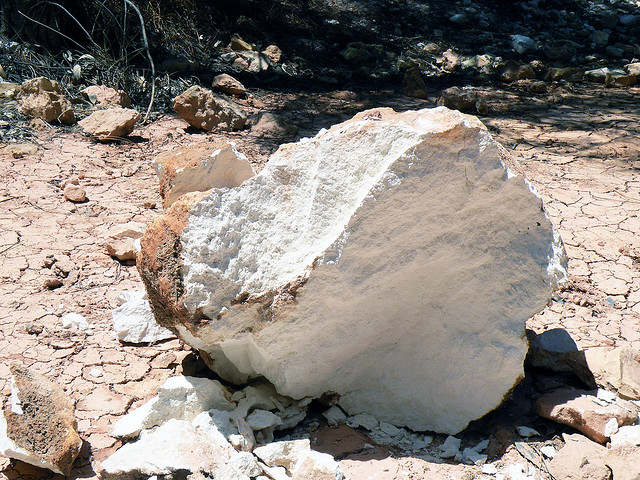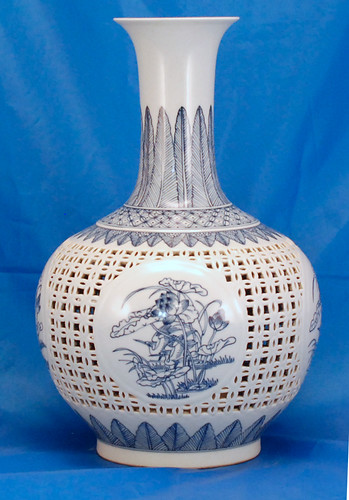
Kaolinite is one of those few minerals that can be used for everything. No, Really (Image Credit: EM4NU from Flickr)
Your mineral riddle for this week is: What starts off as granite, and can be turned into paper, medicine, fine china, and gauze?
The Answer is: Kaolinite!
It’s a naturally white clay found all over the world- usually in hot humid climates like the tropics. It’s this sweltering climate that actually creates Kaolinite minerals, turning the hard mineral orthoclase feldspar into the soft clay, kaolinite. Its a process called chemical weathering, where water and weak acids in the groundwater react with granites and other rocks composed of orthoclase feldspar, breaking down and reforming their chemical bonds into something completely different. For the more chemistry-minded among you, the reaction is:
- 2KAlSi3O8 + 2H2CO3 + 9H2O ⇌ Al2Si2O5(OH)4 + 4H4SiO4 + 2K+ + 2HCO3–
For the rest of us there’s this handy video by ArtMovieMaster from YouTube:
But even after kaolinite’s intense metamorphosis, it doesn’t get to rest. Humans have been using the soft white clay for centuries, for all kinds of things. One of it’s earliest uses was as a prehistoric Pepto-Bismol, soothing upset stomachs, and preventing diarrhea and hunger when ingested. Eating kaolinite for medical or nutritional reasons is still practiced in many places around the world. Nowadays it’s also used in military medicine, infused into bandages to help wounds heal faster.
It also acts as the ingredient that makes porcelain, porcelain-no surprise there, as there aren’t that many pure white clays in the world. Without it we we would have no fancy and highly breakable dinnerware sets for formal occasions, no porcelain dolls, and no weirdly macabre pottery products like bone china. Bone china was developed in England in the 1700s and is made of a mixture of kaolinite and bone dust, a combination that actually produces a fairly durable product.
What might be surprising is that this helpful mineral is also what causes textbooks to be so darn heavy. Paper manufacturers use most of the kaolinite mined from the earth to make their paper pretty. That glossy finish on the pages of your geology book? It’s all because of kaolinite. It makes the paper more durable to wear and tear, but you can imagine what coating each and every page of that 500 page tome does to the book’s weight-ouch.

Porcelain Vase (Image credit: Silk Road Collection from Flickr)